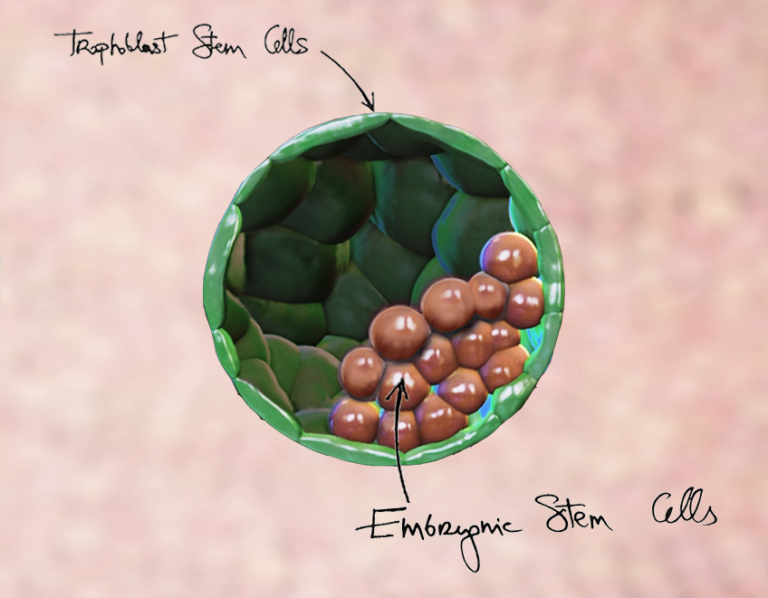Opening the black box of early pregnancy
We still know very little about how early embryos develop, due to their small size (the width of a hair) and inaccessibility in the womb. Such knowledge is however vital as minor flaws at the start of pregnancy can prevent the embryo to implant in utero or contribute to diseases during adult life. Researchers have now discovered how to build model embryos in the laboratory from stem cells. Leader of the scientific team Dr. Nicolas Rivron (MERLN Institute and Hubrecht Institute): ‘Our research helps to understand the perfect path an early embryo must take for a healthy development.’

A conversation between stem cells
The early embryo is a hollow sphere formed by less than a hundred cells. It comprises an outer layer of cells, the future placenta, and a small cluster of inner cells, the future embryo. Stem cell lines representing these inner and outer parts were first cultured independently and largely multiplied in the laboratory. Using engineering technologies researchers then assembled them in a recreated environment that triggered their conversation and self-organisation. While observing the process Dr. Nicolas Rivron noticed that ‘it is the embryonic cells that instruct the placental cells how to organise and to implant in utero. By understanding this molecular conversation, we open new perspectives to solve problems of infertility, contraception, or the adult diseases that are initiated by small flaws in the embryo’. For example, diabetes or cardiovascular diseases.



